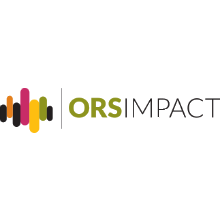 If we are to talk about measuring social returns, a good starting place is the outcomes that lead to them. This is the point where can measure both the organization itself (sustainability of the business and the model) as well as the cumulative effects of specific outcomes on the lives of the people we wish to help. Causality is implied in a theory of change: “If we achieve A, B, C outcomes, then we expect X, Y, Z to happen.” 100% definitiveness eludes any organization. However, defining a theory of change (even if by another name) and supporting outcomes is necessary before any discussion of returns (including impact, especially.) Sarah Stachowiak, CEO of ORS Impact, walks through the basics. …
If we are to talk about measuring social returns, a good starting place is the outcomes that lead to them. This is the point where can measure both the organization itself (sustainability of the business and the model) as well as the cumulative effects of specific outcomes on the lives of the people we wish to help. Causality is implied in a theory of change: “If we achieve A, B, C outcomes, then we expect X, Y, Z to happen.” 100% definitiveness eludes any organization. However, defining a theory of change (even if by another name) and supporting outcomes is necessary before any discussion of returns (including impact, especially.) Sarah Stachowiak, CEO of ORS Impact, walks through the basics. …
Measuring social impact can be messy and difficult. It’s no wonder that some nonprofits express qualms over the growing call to share more results data as part of nonprofit profiles and rating systems. Social change work is often non-linear, built for the long haul.
Even with good measurement it is hard to attribute “credit” for progress and rarely easy to compare results across different organizations. But we can’t afford to throw up our hands and say it’s too hard. The potential benefits of having more and better sector-wide data could mean more effective collaborations, less duplication, and greater impact. However, to realize this benefit, the sector needs to generate and share more meaningful information about results.
That begins with being clear on which outcomes they should report. As a consultant to foundations and nonprofits who want to use data and information to strengthen their work, I help groups articulate what they do and the “so what?”—the changes, or outcomes, they hope to achieve. Those outcomes must flow logically from a theory of change. While this can sound like jargon, it is simply a product that clearly lays out how and why you expect your actions to lead to changes in the world.
Whether you work with a direct service agency, an advocacy group, or a collaborative working on systemic change, it is possible to be clear about the theory of change behind the work.
It can take many forms—a logic model, an outcome map, a narrative or other graphic. Regardless of format, all programs can articulate the most appropriate outcomes of their work. Sometimes these will look like direct changes for the beneficiaries of their programs, such as changes in individual knowledge, skills, attitudes, behaviors or conditions.
Other times, activities will be more focused on systems, organizations or policies. In these cases, interim outcomes can be identified that will indirectly but ultimately also support impact on the lives of individuals or the environment. These include changes such as more champions among legislators for an issue of interest, achieving greater coordination across agencies or generating greater public awareness about an issue.
Check the image below for an in-depth guide from Grantcraft.org
In addition to having clearly understood outcomes to measure, the sector will reap the greatest benefit from more information about impact if viewers and users of results data can also acknowledge that showing a failure can actually be a positive result.
While few of us like to publicly stumble, finding out when things aren’t working gives organizations the opportunity to re-calibrate, try new things and continue to innovate toward better impact down the road. Without the learning that can result from good measurement, we risk incentivizing only safe “bets” when we still have so much to learn about addressing social issues.
I’m hopeful that the conversation in the sector about results and outcomes can rise above the fears. And the approaches of the venues for reporting results, like Charting Impact and Charity Navigator seem to take into account the complicated nature of this world. I hope organizations will embrace the opportunity to clearly align around, measure and share better information about results and impact. With any luck, a focus on smart, pragmatic measurement of results can empower organizations to learn and achieve in ways that have not been possible in the past.
…
Your turn:
[poll id=’18’]

